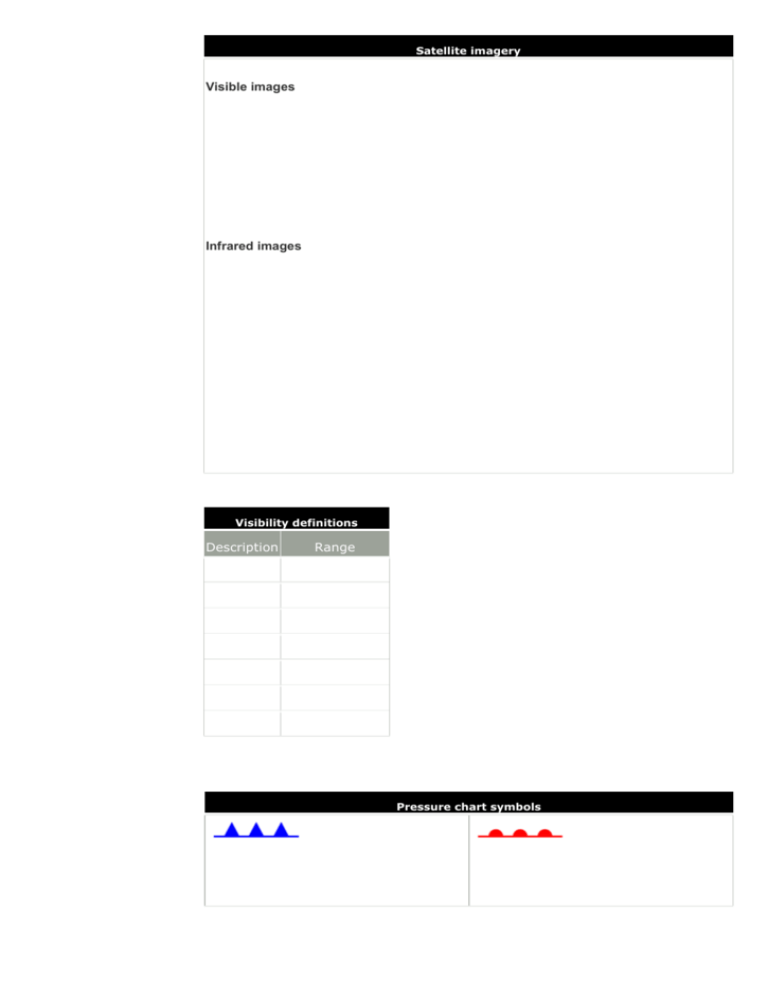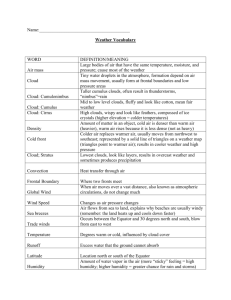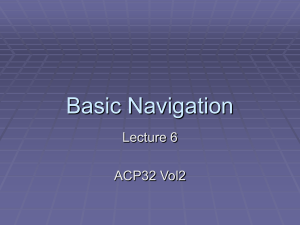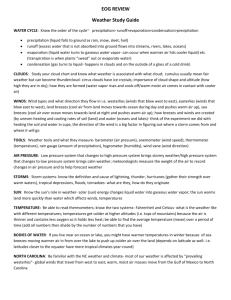Satellite imagery
advertisement

Satellite imagery Visible images Visible images record visible light from the sun reflected back to the satellite by cloud tops and land and sea surfaces. They are equivalent to a black and white photograph from space. They are better able to show low cloud than infrared images (low cloud is more reflective than the underlying land or sea surface). However, visible pictures can only be made during daylight hours. Infrared images The infrared image shows the invisible infrared radiation emitted directly by cloud tops and land or ocean surfaces. The warmer an object is, the more intensely it emits radiation, thus allowing us to determine its temperature. These intensities can be converted into greyscale tones, with cooler temperatures showing as lighter tones and warmer as darker. Lighter areas of cloud show where the cloud tops are cooler and therefore where weather features like fronts and shower clouds are. The advantage of infrared images is that they can be recorded 24 hours a day. However, low cloud, having similar temperatures to the underlying surface, are less easily discernable. Visibility definitions Description Range Unknown - Very poor Less than 1 km Poor Between 1-4 km Moderate Between 4-10 km Good Between 10-20 km Very good Between 20-40 km Excellent More than 40 km Pressure chart symbols Cold front Warm front The leading edge of an advancing colder air The leading edge of an advancing warmer air mass. Its passage is usually marked by cloud mass, the passage of which commonly brings and precipitation, followed by a drop in cloud and precipitation followed by increasing temperature and/or humidity. temperature and/or humidity. Occluded front (or 'occlusion') Occlusions form when the cold front of a depression catches up with the warm front, lifting the warm air between the fronts into a narrow wedge above the surface. Occluded fronts bring cloud and precipitation. Developing cold/warm front (frontogenesis) Represents a front that is forming due to increase in temperature gradient at the surface. Upper cold/warm front Weakening cold/warm front (frontolysis) Upper fronts represent the boundaries Represents a front that is losing its identity, between air masses at levels above the usually due to rising pressure. Cloud and surface. For instance, the passage of an upper precipitation becomes increasingly warm front may bring warmer air at an fragmented. altitude of 10,000 ft, without bringing a change of air mass at the surface. Isobars Quasi-stationary front Contours of equal mean sea-level pressure A stationary or slow-moving boundary (MSLP), measured in hectopascals (hPa). between two air masses. Cloud and MSLP maxima (anticyclones) and minima precipitation are usually associated. (depressions) are marked by the letters H (High) and L (Low) on weather charts. Trough An elongated area of relatively low surface pressure. The troughs marked on weather charts may also represent an area of low Thickness lines thickness (thickness trough), or a perturbation in the upper troposphere (upper trough). All Pressure decreases with altitude, and thickness measures the difference in height are associated with increasing cloud and risk of precipitation. between two standard pressure levels in the atmosphere. It is proportional to the mean temperature of this layer of air, so is a useful way of describing the temperature of an airmass. Weather charts commonly show contour lines of 1,000-500 hPa thickness, which represent the depth (in decametres, where 1 dam = 10 m) of the layer between the 1,000 hPa and 500 hPa pressure levels. Cold, polar air has low thickness, and values of 528 dam or less frequently bring snow to the UK. Conversely, warm, tropical air has high thickness, and values in excess of 564 dam across the UK often indicate a heatwave. Convergence line A slow-moving trough, which is parallel to the isobars and tends to be persistent over many hours or days. They are quite common in cold northerly outbreaks down the Irish Sea, affecting west Wales, Devon and Cornwall in particular, but can be found in other areas also. This convergence line can gives hours of persistent precipitation over very localised areas, whilst a few miles down the road it is relatively dry, leading to some heavy snowfall/rainfall. In summer the convergence lines are not as easy to forecast, but then can still occur due to sea-breeze convergence, and are over the land, whilst in winter they are over the sea.








